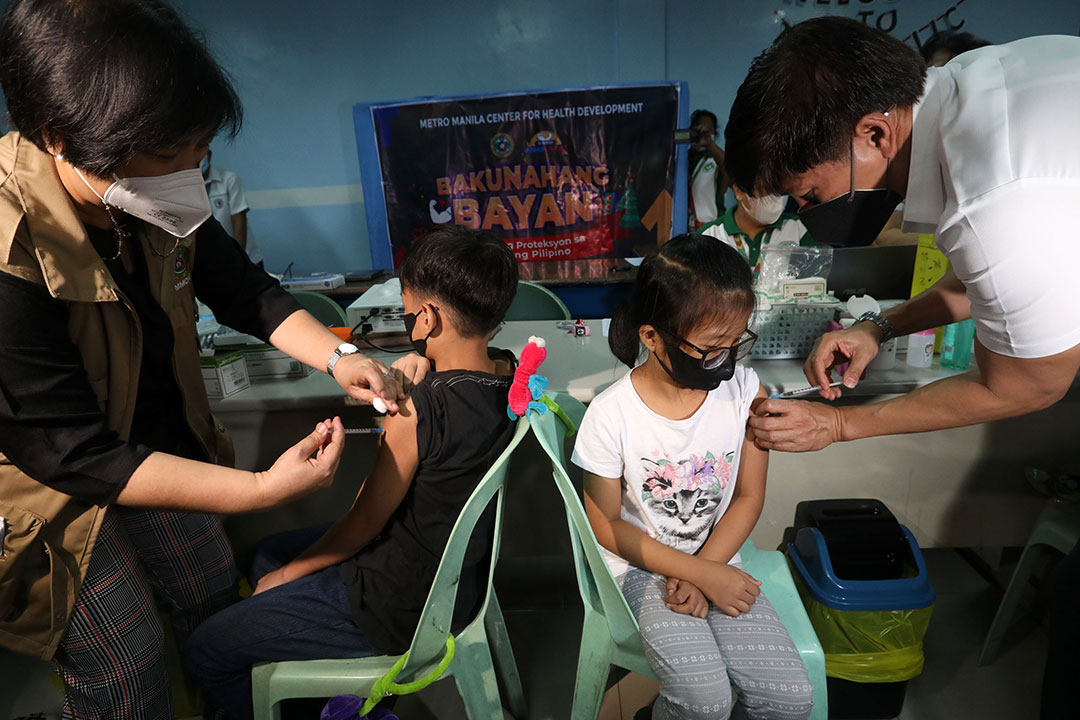
Medicine Cabinet
By Teodoro B. Padilla

Seasonal influenza or the flu is one of the most common illnesses in the Philippines. The flu season in the country is from June to November, coinciding with the rainy season.
The Department of Health (DoH) said that 9,491 flu-like cases nationwide were recorded from July 28 to Aug. 10, 55% higher compared to 6,124 cases reported in the previous week. All regions except the Bangsamoro in southern Philippines showed an increase in flu-like cases during this four-week period. Annual seasonal influenza epidemics have a substantial economic impact through reduced workforce productivity and increased pressure on healthcare services.
Seasonal influenza is an acute respiratory infection caused by influenza viruses. There are four types of influenza viruses, types A, B, C, and D. Influenza A and B viruses circulate and cause seasonal epidemics, according to the World Health Organization (WHO).
Symptoms of influenza usually begin around two days after being infected by someone who has the virus. These include sudden onset of fever, cough (usually dry and can be severe and last two weeks or more), headache, muscle and joint pain, severe malaise (feeling unwell), a sore throat, and a runny nose.
Seasonal influenza spreads easily, with rapid transmission in crowded areas including schools and nursing homes. When an infected person coughs or sneezes, droplets containing viruses (infectious droplets) are dispersed into the air and can infect persons in close proximity. The virus can also be spread by hands contaminated with influenza viruses. To prevent transmission, people should cover their mouth and nose with a tissue when coughing and wash their hands regularly.
While most people recover from fever and other symptoms within a week without requiring medical attention, influenza can cause severe illness or death, especially in people at high risk. Hospitalization and death due to influenza occur mainly among high-risk groups, warns the WHO.
High-risk groups include pregnant women, children under five years of age, older people, individuals with chronic medical conditions (such as chronic cardiac, pulmonary, renal, metabolic, neurodevelopmental, liver or hematologic diseases) and individuals with immunosuppressive conditions/treatments (such as HIV, those receiving chemotherapy or steroids, or who have a malignancy). Healthcare workers are at high risk of acquiring influenza virus infections due to increased exposure to the patients, and of further spreading it particularly to vulnerable individuals.
Influenza can worsen symptoms of other chronic diseases. Severe influenza can lead to pneumonia and sepsis (a serious condition caused by the body’s severe reaction to an infection). The WHO strongly advises people with other medical issues or who have severe flu symptoms to seek medical care.
Vaccination is the best way to prevent influenza, the WHO stresses. Safe and effective flu vaccines have been used for more than 60 years. Immunity from vaccination wanes over time; as such, the WHO recommends an annual flu vaccination. Moreover, flu viruses are constantly changing. This is why flu vaccines are updated routinely, with new vaccines developed that contain influenza viruses that match circulating strains.
The flu vaccine oftentimes makes the illness less severe and reduces the chance of complications and death, the WHO explains. Vaccination is especially important for people at high risk of influenza complications and their carers. The WHO recommends annual flu vaccination for pregnant women, children aged six months to five years, people over the age of 65, people with chronic medical conditions, and health workers.
Flu vaccination provides numerous benefits, according to the US Centers for Disease Control and Prevention (CDC). The flu vaccine prevents millions of illnesses and flu-related doctor’s visits each year. During seasons when flu vaccine viruses are similar to the circulating flu viruses, the flu vaccine has been shown to reduce the risk of having to go to the doctor with flu by 40-60%.
A 2021 study showed that among adults hospitalized with flu, vaccinated patients had a 26% lower risk of intensive care unit (ICU) admission and a 31% lower risk of death from flu compared with those who were unvaccinated. A 2018 study in New Zealand showed that among adults hospitalized with flu, vaccinated patients were 59% less likely to be admitted to the ICU than those who had not been vaccinated. Among adults in the ICU with flu, vaccinated patients spent on average four fewer days in the hospital than those who were not vaccinated.
A 2018 study showed that from 2012 to 2015, flu vaccination among adults reduced the risk of being admitted to an ICU with flu by 82%. A 2017 systematic review found that during 2010 to 2011 through 2014 to 2015, flu vaccines reduced the risk of flu-associated hospitalization among older adults by about 40% on average.
Flu vaccination can also be life-saving for children. It can reduce children’s risk of severe life-threatening influenza by 75%, flu-related hospitalization by 41%, and flu-related emergency department visits by half among children aged six months to 17 years. A 2014 study showed that flu vaccination reduced children’s risk of flu-related pediatric intensive care unit (PICU) admission by 74% during flu seasons from 2010 to 2012.
Flu vaccination is important for people with certain chronic health conditions, including heart disease, chronic obstructive pulmonary disease (COPD), and diabetes, as it reduces disease severity and the risk of hospitalization. Flu vaccination during pregnancy also helps protect pregnant people from flu during and after pregnancy and helps protect their infants from flu in their first few months of life.
Last but not the least, getting flu shots may also protect the people around them, including those who are more vulnerable and at high risk.
Teodoro B. Padilla is the executive director of the Pharmaceutical and Healthcare Association of the Philippines which represents the biopharmaceutical medicines and vaccines industry in the country. Its members are in the forefront of research and development efforts for COVID-19 and other diseases that affect Filipinos.